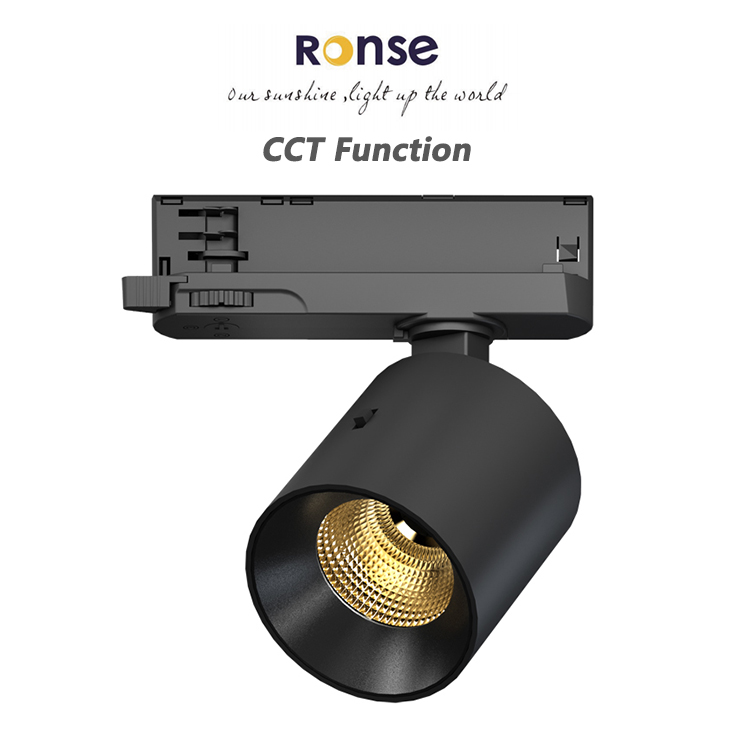The Evolution of LED Technology in Commercial Lighting
Few innovations have had as big of an impact on the lighting industry as light-emitting diodes, or LEDs. LEDs were formerly thought to be a niche technology, they have quickly advanced to become the standard for commercial lighting applications.
The development of LED technology in commercial lighting has been nothing short of amazing, starting from their modest origins as indicator lights and continuing to their current position as the foundation of contemporary lighting systems.
Early Days: LEDs as Indicator Lights
The history of LEDs in commercial lighting dates back to their first development as durable, effective indicator lights for electronic equipment in the early 1960s.
These early LEDs were tiny, low-power gadgets that produced light mostly in the colors red and green. Although they were ideal for uses like indicators and displays, they were still unable to generate the strong, white light required for general illumination.
Advancements in Brightness and Color
LED technology advanced significantly in the 1970s and 1980s, and this is seen as a pivotal time in the field's development. Researchers have achieved a significant advancement in boosting LED brightness and extending their color range.
These developments made it possible for LEDs to be utilized in a greater variety of applications, such as electronic displays, traffic lights, and vehicle lighting.
Entry into General Illumination
LEDs were not given much thought as a general lighting option until the late 1990s and early 2000s. Three major developments in LED technology are what are causing this transition.
First, compared to more conventional lighting technologies like incandescent and fluorescent lamps, LEDs have much higher energy efficiency. LEDs are more effective at converting electrical energy to light than conventional incandescent lamps because they create light by electronically stimulating materials and produce nearly no heat.
Second, because of developments in phosphor and manufacturing technology, LEDs are now able to generate the strong white light needed for general illumination. LEDs' luminous efficiency keeps becoming better, enabling them to generate lighter, brighter light with the same amount of power.
At last, as LED technology has advanced and market competition has heightened, LED production costs have dramatically decreased, increasing their suitability for commercial use. In the long run, LEDs provide evident financial benefits due to their extended lifespan, excellent energy efficiency, and low maintenance expenses.
Rapid Advancements in the 21st Century
In the 21st century, LED technology is developing at an exponential rate thanks to advances in science, technology, and consumer demand. The following are some significant developments influencing the growth of LED technology in commercial lighting:
Higher Efficiency
LEDs have become more energy efficient, with some models producing over 200 lumens of light per watt, far exceeding traditional lighting technologies.
LED lighting is becoming more and more popular due to its high energy efficiency. Fluorescent bulbs can only deliver 50–100 lumens per watt, while traditional incandescent lamps usually produce less than 20 lumens per watt.
Improved Color Quality
LED light quality has increased dramatically, offering a greater color temperature range and better color rendering.
LED technology has advanced significantly, resulting in light that better renders colors and is more like to natural light. This implies that things' actual colors can be represented by LED lights more precisely.
In order to offer a greater variety of choices, LEDs' color temperature range has also been extended. Warm white, natural white, and cool white are just a few of the color temperature possibilities that LEDs may offer to suit the requirements of various situations and locations.
Longer Lifespan
Nowadays, the typical service life of LEDs is between 50,000 and 100,000 hours, which is significantly longer than that of other lighting technologies. Because of their extended lifespan, LED bulbs are more robust, require less replacements less frequently, and require less maintenance.
Smart Lighting
Smart controls can now be linked with LED lighting systems, providing increased flexibility and energy savings. LED lighting can adapt to various settings and usage requirements by adjusting its brightness, color temperature, and lighting mode through integration with advanced control systems.
Increased energy savings can also be attained through intelligent control. LED lighting systems can use less energy and consume less energy by automatically monitoring ambient light levels, altering brightness, and adjusting lighting at regular intervals.
Miniaturization
As LEDs get smaller and more compact, a plethora of new design and application options arise. LED chip and packaging technology has continued to progress, allowing for significant size reductions of LEDs without sacrificing brightness or energy efficiency.
This miniaturization allows LEDs to be integrated into more products and applications, bringing new possibilities to a variety of industries.
Current Trends and Future Outlook
The market for commercial lighting is currently dominated by LED technology, which finds use in everything from retail establishments and office buildings to outdoor signs and architectural lighting.
LED technology appears to have a promising future in commercial lighting, as continuing research and development efforts aim to enhance controllability, efficiency, and color quality.
The emergence of human-centric lighting, which attempts to replicate the natural light cycle to enhance health and well-being, is one of the most exciting advancements in LED technology.
In order to develop lighting systems that are smarter and more efficient, another area of focus is the integration of LEDs with other developing technologies, such as Internet of Things (IoT) devices.
Conclusion
To sum up, the development of LED technology in commercial lighting has been an amazing journey propelled by innovation and an unwavering dedication to quality and efficiency.
LEDs will undoubtedly have an even bigger impact on how lighting is designed in the future as they develop and get better.
